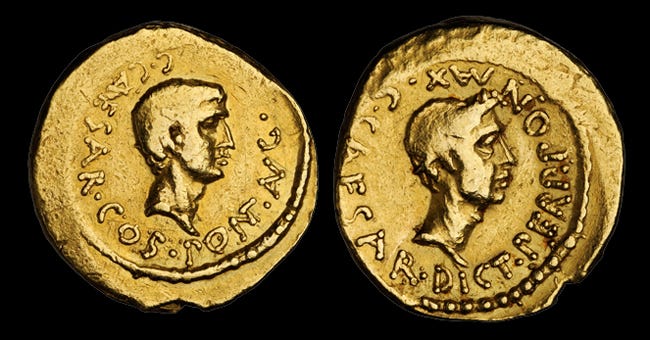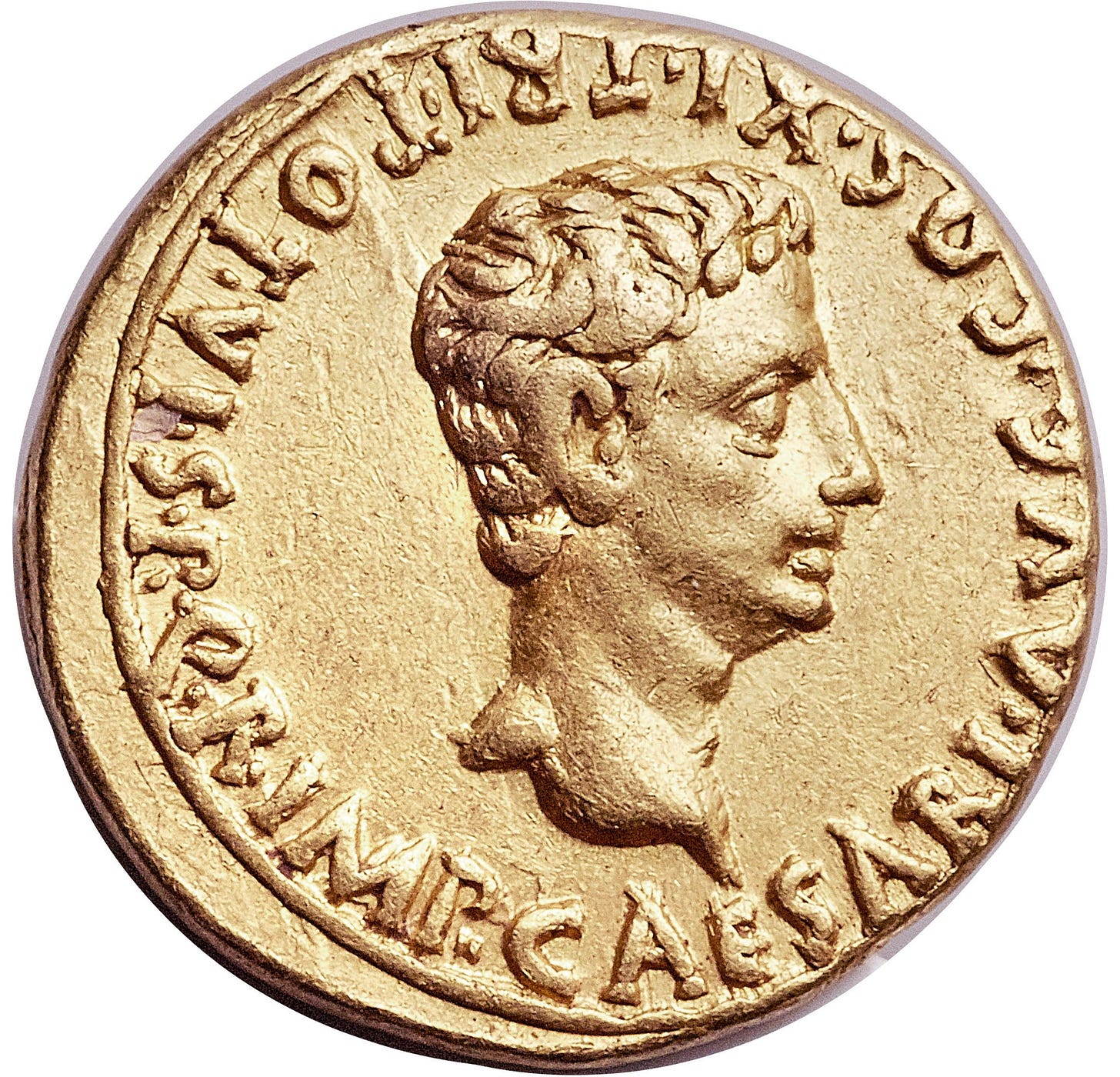Unlocking the Secrets of Roman Coins
From Obverse to Reverse: Deciphering Roman Coin Inscriptions. A Beginner's Guide
How does anyone know what Roman coins mean? Understanding Roman coins can seem daunting, but once you get the hang of it, it's like piecing together a fascinating historical puzzle.
In this post, we’ll explore how to read Roman coins, especially those from the early imperial period. This is my favourite period, so I may be a bit biased!
The Basics
Roman coins have two sides (as do most I suppose!): the obverse (front) and the reverse (back). Typically the obverse shows the face of the person who ordered the coin to be minted.
The really good thing about Roman coins is that they're very formulaic. So once you understand the basic elements, you can usually figure out what the rest of the coin is about.
An important thing to know is that the writing on Roman coins is often abbreviated, because they don't have a lot of space on a coin. We're going to have a look at some common abbreviations. Firstly names, and then titles that you might see on lots of different coins.
Common Names on Roman Coins
Understanding the abbreviations of names on Roman coins is a great first step:
C: Gaius
M: Marcus
L: Lucius
CAES: Caesar (This can sometimes be written in full but is often abbreviated)
Titles on Roman Coins
Here are some common titles you might encounter:
IMP: imperator, meaning General. This is where we get the word Emperor today.
COS: consul, one of the top two leading politicians in Rome, similar to a prime minister but with two people sharing the role.
DICT: dictator, an extraordinary power used in times of crisis. Don’t expect to see this one very often!
TRP: tribune. The TR stands for tribune and P for potestas, meaning “the power of the tribunate”.
PONT: pontifex, a priest.
PM: pontifex maximus, the chief priest of the whole of Rome.
AUG: This can mean either augur (a priest who interprets bird signs), or Augustus (a title given to emperors later on, named after Augustus Caesar).
F or FIL: filius - Son of… The Romans were very proud of lineage, so you may see this frequently.
Analysing Specific Coins
Let’s have a go at using the above key to help figure out some inscriptions on real coins.
1. Octavian / Julius Caesar Aureus
This one is the one I had at the beginning. This is one of my favourite coins.
The obverse reads: C Caesar Cos Pont Aug.
C Caesar: Gaius Caesar. This was the official name of Octavian before he became Augustus. This coin was minted just after Julius Caesar's death.
Cos: consul - an elected office
Pont: pontifex - a priest
Aug: augur - interprets signs from the gods
Gaius Caesar, Consul Pontifex Augur. This is all about Octavian.
The reverse says: C Caesar Dict Perp Pont Max.
C Caesar: Gaius Caesar. This was Julius’ Caesar’s official name, showing how similar Octavian is to his adopted father.
Dict Perp: Dictator in Perpetuity - an office which should have been temporary had been given to Caesar forever.
Pont Max: pontifex maximus - the chief priest of Rome.
So this is the first coin that Octavian got minted when he came to Rome. This shows Octavian linking himself to Julius Caesar while highlighting the difference that Julius was a dictator, whereas Octavian was an elected consul.
2. Augustus - son of a god Aureus
On this one, you can see Augustus written down the left hand side, and you can also see Divi F.
F - “son of”
DIVI - “god”.
Augustus, the son of a god.
This is a different coin where Augustus (as he's now known, previously Octavian) is showing that he is the son of the now divine Julius Caesar.
3. Augustus’ Achievements Aureus
SPQR IMP Caesar Aug Cos XI TRI Pot VI
Let’s break this one down:
SPQR: Senatus Populusque Romanus (By the will of the Senate and the People of Rome)
IMP: Imperator (General)
Caesar Augustus: The name, emphasizing Augustus
Cos XI: Elected consul 11 times, a record achievement.
TRI POT VI: Tribunate Potestas (Power of the Tribune for the 6th time)
Coin-ing Conclusion
And that's my very brief introduction to reading Roman coins! I do hope you found it interesting!
When you visit a museum or come across Roman coins online, see if you can decipher any inscriptions and understand their historical context. It’s a rewarding experience that connects you to the rich history of Rome. Let me know how you get on!
Until next time, happy coin hunting! See you next time on bambasbat.




